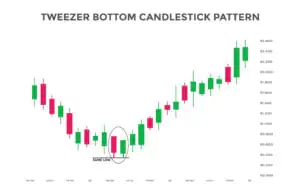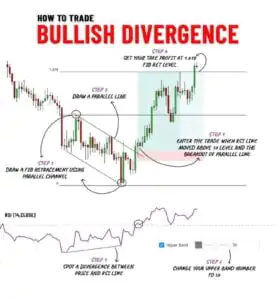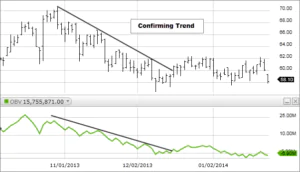Master Hedging in Trading: Essential Tips & Tricks

Outline Table
- Introduction
- Overview of Hedging in Trading
- Understanding Hedging
- Definition
- Importance in Trading
- Types of Hedging Strategies
- Direct Hedging
- Complex Hedging
- How Hedging Works
- Basic Principles
- Examples in Different Markets
- Benefits of Hedging
- Risk Management
- Profit Optimization
- Risks and Considerations
- Costs Involved
- Potential Downsides
- Hedging Instruments
- Futures and Forwards
- Options
- Swaps
- Hedging in Forex Trading
- Strategies
- Case Study
- Hedging in Stock Market
- Equity Options
- Index Futures
- Regulatory and Ethical Considerations
- Legal Framework
- Ethical Trading Practices
- Implementing Hedging in Your Trading Strategy
- Steps to Follow
- Monitoring and Adjusting
- Advanced Hedging Techniques
- Quantitative Methods
- Algorithmic Strategies
- Case Studies and Real-World Examples
- Success Stories
- Lessons Learned
- Tools and Software for Hedging
- Analytical Tools
- Trading Platforms
- Conclusion
- Summary
- Future Outlook
FAQs
- What is hedging in simple terms?
- How can beginners start hedging in trading?
- Are there any specific tools required for hedging?
- What are the common risks associated with hedging?
- How does hedging fit into a diversified investment strategy?
The Essential Guide To Hedging In Trading
Introduction
Hedging, in the financial world, is like having an insurance policy for your trades. It’s a strategy used by traders and investors to protect themselves from losses due to price movements in the market. This guide will walk you through the ins and outs of hedging in trading, making complex concepts understandable and applicable for your trading strategy.
Understanding Hedging
Hedging Defined
At its core, hedging involves taking an opposing position in a related asset to offset potential losses. It’s about finding balance and security in the volatile dance of the markets.
Importance in Trading
Why hedge? It’s all about risk management. In a world where market movements can be unpredictable, hedging is a tool to keep your portfolio safe from extreme fluctuations.
Types of Hedging Strategies
Direct Hedging
This is when you buy and sell the same or closely related assets simultaneously. It’s straightforward but effective.
Complex Hedging
Involves using derivatives like options and futures to create a hedge. It’s more sophisticated but offers greater flexibility.
How Hedging Works
Basic Principles
Hedging works on the principle of offsetting. If one investment moves in an unfavorable direction, the hedge, ideally, moves in the opposite direction to counterbalance the impact.
Examples in Different Markets
Whether it’s commodities, currencies, or stocks, hedging principles apply. We’ll explore how these strategies play out in different arenas.
Benefits of Hedging
Risk Management
The primary benefit of hedging is minimizing risk. It’s not about eliminating risk but managing it smarter.
Profit Optimization
Interestingly, hedging can also be about profit. By locking in prices, traders can protect gains and mitigate losses.
Risks and Considerations
Costs Involved
Hedging isn’t free. The costs of implementing a hedge, whether it’s the premium for an option or the spread in a futures contract, need to be considered.
Potential Downsides
If not done carefully, hedging can limit your potential gains or, in some cases, lead to complicated financial situations.
Hedging Instruments
Futures and Forwards
These contracts allow you to buy or sell an asset at a predetermined price in the future, making them ideal for hedging.
Options
Options give you the right, but not the obligation, to buy or sell an asset, offering flexibility in hedging strategies.
Swaps
Interest rate swaps or currency swaps can hedge against fluctuations in rates and exchange rates, respectively.
Hedging in Forex Trading
Strategies
Forex markets are particularly suited to hedging, given their liquidity and 24-hour cycle. We’ll delve into specific forex hedging strategies.
Case Study
A real-world example will show how forex traders use
hedging to protect against currency volatility.
Hedging in Stock Market
Equity Options
Options on stocks or ETFs can be a powerful way to hedge against downturns in the stock market.
Index Futures
Using index futures as a hedge can protect your portfolio against market-wide shocks.
Regulatory and Ethical Considerations
Legal Framework
Understanding the legal landscape is crucial to ensure your hedging strategies don’t cross any lines.
Ethical Trading Practices
Hedging should be used responsibly, without manipulating the market or engaging in unfair practices.
Implementing Hedging in Your Trading Strategy
Steps to Follow
From identifying your risk exposure to choosing the right instruments, we’ll guide you through setting up your hedge.
Monitoring and Adjusting
A hedge isn’t a set-it-and-forget-it strategy. Regular monitoring and adjustments are key to its success.
Advanced Hedging Techniques
Quantitative Methods
For those looking deeper, quantitative hedging involves using mathematical models to optimize hedging strategies.
Algorithmic Strategies
Algorithmic trading can automate hedging processes, making them more efficient and timely.
Case Studies and Real-World Examples
Success Stories
Hearing about successful hedging strategies can be inspiring and educational, highlighting the practical application of what we’ve discussed.
Lessons Learned
Mistakes are also valuable teachers. We’ll look at where hedging went wrong and what can be learned from those experiences.
Tools and Software for Hedging
Analytical Tools
The right software can make a world of difference in identifying hedging opportunities and risks.
Trading Platforms
Certain platforms offer advanced features tailored for hedging, which we’ll explore.
Conclusion
Hedging is an essential component of risk management in trading. By understanding and applying the principles and strategies outlined in this guide, traders can protect their investments from unexpected market movements. As we’ve seen, hedging is not without its costs and complexities, but when executed wisely, it can be a powerful tool for stabilizing and potentially enhancing your trading outcomes.
FAQs
- What is hedging in simple terms?
- Hedging is like insurance for your trades, designed to protect against losses from price movements.
- How can beginners start hedging in trading?
- Start with understanding the basic principles of risk management and explore simple hedging strategies like direct hedging with correlated assets.
- Are there any specific tools required for hedging?
- Basic analytical tools and access to derivatives markets (for options, futures) are essential for implementing hedging strategies.
- What are the common risks associated with hedging?
- Costs of setting up hedges, potential limitation of profits, and the complexity of managing multiple positions are key risks.
- How does hedging fit into a diversified investment strategy?
- Hedging complements diversification by providing targeted protection against specific risks, whereas diversification spreads risk across different assets.





